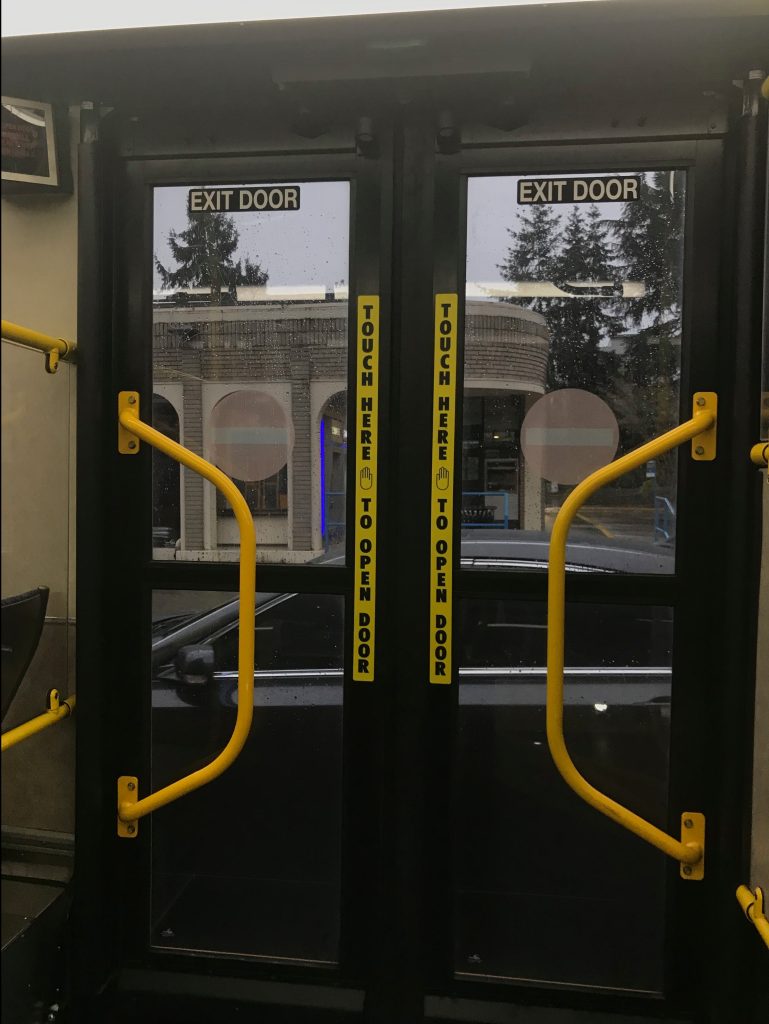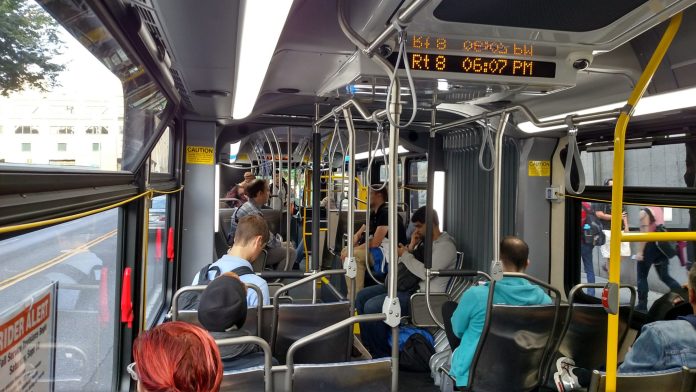Shouts of “backdoor” are quickly returning to Seattle buses. A few months ago, King County Metro Transit began phasing out sensory technology for rear doors opening when activated by riders. Riders were encouraged to motion near or press on strips between doors at stops to open doors instead of futilely hoping or requesting operators to open the backdoors. New trolleybuses that were added to the fleet beginning in 2015 were the first to feature the technology. The Metro fleet quickly grew to include other bus models using the technology with some 280 buses operational at peak, but more than 75 buses have had the technology deactivated. The remaining buses with the sensing doors will be deactivated as they go through regular maintenance and service in the next couple of months.
Why Metro Is Decommissioning the Technology

In speaking with Bill Bryant, a Metro transit planner, he said that there were several reasons for phasing out use of the sensing technology.
- The adoption rate by operators and riders were both relatively low from the outset, Bryant said. He suggested that it never really caught on with the riding public as part of daily use and often was confusing. Likewise, operators eventually began to simply override the system by opening all doors at stops when they believed riders toward the rear would deboard, he said.
- Operationally, the technology has not been noticeably faster for the boarding and deboarding process, Bryant said. Operators have to activate the feature at each stop by pressing a button to unlock the doors, which is indicated by a green light above the doors when active. Riders then have to motion past a sensor near the door (not actually press the door) to activate opening.
- By mid-2019, Metro will be significantly alterting the boarding and deboarding system since non-RapidRide routes operating along Third Avenue will feature all-door boarding. The operational changes means that those routes will be subject to proof of payment just like RapidRide and make opening rear doors an all-the-time event. Bryant suggested that having different operational protocols with regards to backdoors could only continue to create confusion for riders.
In making the decision, Metro did not survey riders formally instead relying on anecdotal input from operators and observation of operations in the field. It’s quite possible that the rider experience does not mesh with Metro’s opinion–it certainly does not match this author’s experience where riders regularly activated backdoors. Nevertheless, practical considersations–not the modest cost of $155 per unit–factored into the decision according to Metro.
What Metro Plans To Do Instead
Metro realizes that customers often feel distressed when they can’t get off the bus and have to yell to exit. Bryant said that two key changes could be on the way, though they won’t necessarily fully eliminate this problem.
The first is improving the design of stickers encouraging riders to exit at doors toward the rear of the bus to improve operations. Metro has had large stickers directing riders to do this for several years, but the graphics, location, and size could use an overhaul to further advertise this circulation protocol. Another change could be an audio annoucement reminding riders to exit at rear doors when possible, perhaps at 10-minute intervals.
All of this is to encourage riders to make regular exit through rear doors to improve internal and external circulation on and off buses, which could enhance overall reliability and speed of buses. It could also result in operators being more consistent and opening all doors at stops. However, Bryant said that it is not a mandatory practice of operators to open all doors at all stops, even when a stop is requested since riders have a variety of reasons for passing through the front door (e.g., to collect a bicycle, mobility and accessibility challenges, and lack of platforms to deboard on).
The best course of action in absence of sensory technology is for operators to always open all doors at all stops at all times to improve rider experience even if that might come at the cost of ambient comfort (e.g., more exposure to the elements by nearby onboard riders) and perceived security.
Stephen is a professional urban planner in Puget Sound with a passion for sustainable, livable, and diverse cities. He is especially interested in how policies, regulations, and programs can promote positive outcomes for communities. With stints in great cities like Bellingham and Cork, Stephen currently lives in Seattle. He primarily covers land use and transportation issues and has been with The Urbanist since 2014.


